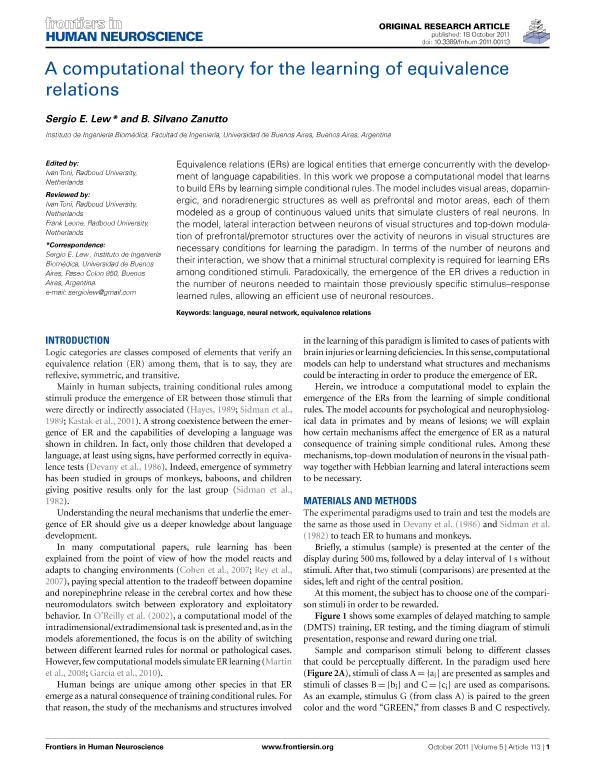Artículo
A computational theory for the learning of equivalence relations
Fecha de publicación:
10/2011
Editorial:
Frontiers
Revista:
Frontiers In Human Neuroscience
ISSN:
1662-5161
Idioma:
Inglés
Tipo de recurso:
Artículo publicado
Clasificación temática:
Resumen
Equivalence relations (ERs) are logical entities that emerge concurrently with the development of language capabilities. In this work we propose a computational model that learns to build ERs by learning simple conditional rules. The model includes visual areas, dopaminergic, and noradrenergic structures as well as prefrontal and motor areas, each of them modeled as a group of continuous valued units that simulate clusters of real neurons. In the model, lateral interaction between neurons of visual structures and top-down modulation of prefrontal/premotor structures over the activity of neurons in visual structures are necessary conditions for learning the paradigm. In terms of the number of neurons and their interaction, we show that a minimal structural complexity is required for learning ERs among conditioned stimuli. Paradoxically, the emergence of the ER drives a reduction in the number of neurons needed to maintain those previously specific stimulus–response learned rules, allowing an efficient use of neuronal resources.
Palabras clave:
Language
,
Neural Network
,
Equivalence Relations
Archivos asociados
Licencia
Identificadores
Colecciones
Articulos(IBYME)
Articulos de INST.DE BIOLOGIA Y MEDICINA EXPERIMENTAL (I)
Articulos de INST.DE BIOLOGIA Y MEDICINA EXPERIMENTAL (I)
Citación
Lew, Sergio E.; Zanutto, Bonifacio Silvano; A computational theory for the learning of equivalence relations; Frontiers; Frontiers In Human Neuroscience; 5; 113; 10-2011; 1-10
Compartir
Altmétricas




